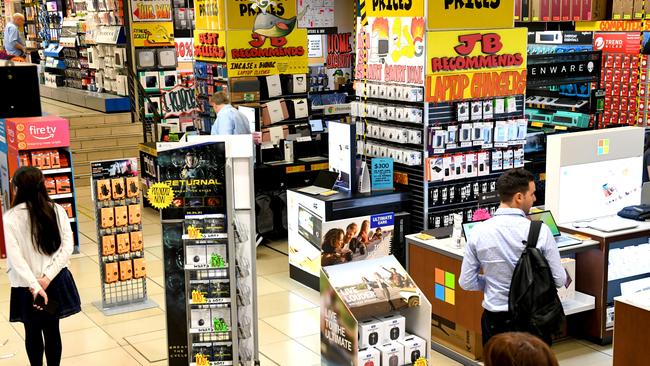
The rush by Australian consumers to buy hardware and appliances imported from China before prices rise may be over.
The price of Chinese goods had been increasing and retailers were warned to expect further big price rises in 2022-23.
Suddenly, the game has changed.
Australian importers are being told that there now won’t be big price rises and indeed, retailers that are aggressive can negotiate price falls.
This new development is separate from the plan of China’s President Xi Jinping and Russian President Vladimir Putin to use cheap Russian oil and gas to gain market share in energy-intensive metal processing industries in countries like the US and Australia I described on Tuesday.
What appears to have happened in China is that a very strong domestic demand had been forecast, which has not taken place.
So, there is capacity in the system.
Moreover, demand in the US is no longer booming as increased US manufacturing capacity starts to come on stream at the same time as consumers are tightening.
In Australia, whether it be Bunnings hardware or appliance retailer The Good Guys, a vast amount of retail goods are imported from China.
The companies were facing lower margins in the face of the anticipated China price rises, so the better purchase prices will underwrite profits in the 2022-23 financial year.
Under stock exchange rules, if a company sees its profit has fallen more than 10 per cent from analysts’ estimates, it must alert the market.
We have had very few profit alerts in recent weeks, so that indicates that profits in the past financial year are going to be strong with few surprises.
Yet the share prices of many retailers have fallen sharply in anticipation of lower profitability. The market believes continuing increases in the Reserve Bank interest rates plus the expected higher Chinese import prices will substantially reduce consumer demand from those with high mortgages.
But the Chinese price rises are off the table and so far, there has been no noticeable impact from rate rises.
Indeed consumers, perhaps anxious to buy goods before the next price rise, have been spending strongly.
Of course, the falling Australian dollar will reduce the Chinese import price advantage.
Indeed one of the less emphasised aspects of Australian costs is the level of the Australian dollar, which has been in steady decline in recent months as the world surplus capital chased the American dollar and its perceived safety.
If the decline continues, the currency pressure on the Reserve Bank will intensify and it may be forced to increase interest rates to levels that damage the economy.
After this week’s half a per cent rise, the Commonwealth Bank repeated the warnings that it has been making in recent months – that the impact of higher interest rates on Australia’s heavily-borrowed consumers is being underestimated by the Reserve Bank.
The share market has embraced that CBA viewpoint in its discounting of major retail shares. That is why the reversal in China pricing is such good news and almost certainly will be widely discussed by big retailers when they announce their profits in coming weeks.
And so we have a sudden three-pronged attack on inflation – the current price restraint from China and the looming low-energy cost exports from China, which will really hit our metal processes.
And it comes at a time when the cost of containers and shipping has fallen.
Around Australia, workers are demanding the five per cent “Albanese wage rise” that was promised in the election campaign.
And in many areas of the enterprise community, unions are softening up large companies ready to attack when enterprise agreements conclude.
Companies that delay may be able negotiate in an entirely different environment if the CBA is right and Chinese price reductions curb inflation.
The biggest single drivers of inflation are now energy prices and the disruption to the food chain from the NSW floods.







For the first time in over a year, I bring good news on Australian inflation.